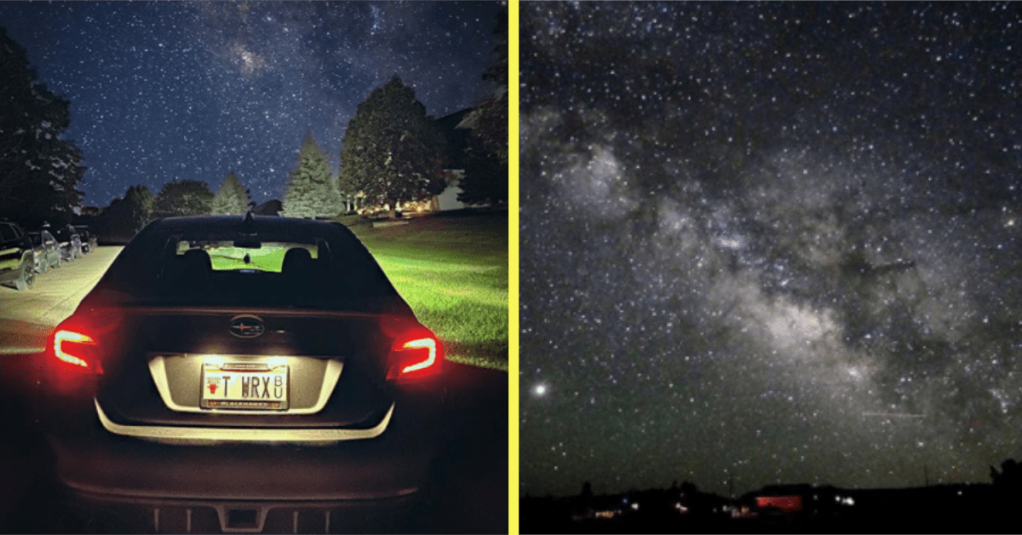Trending Now
The night sky has always been a source of mystery, wonder, and possibility. Humans have used the stars to navigate, ascribed stories to star constellations, and even used astrology to gain a deeper meaning of themselves.
But these days, with our big, bright cities emitting light for miles, depending on where you live, you might never see the stars.
That’s why a handful of cities across the United States have decided to to become International Dark Sky Communities: places where the beauty of the night sky has been preserved.
If you really want to experience the magnificence of the night sky, you’ll want to visit one or all of these 10 U.S IDA towns for stellar stargazing.
1. Wimberley Valley — Texas
https://www.instagram.com/p/CD0NXOklzg9
Wimberley Valley, a combination of the cities of Wimberley and Woodcreek, is home to around 14,000 people.
Not too far from the Austin/San Antonio area, this tourism-driven town in a lovely place for stargazing.
2. Homer Glen — Illinois
https://www.instagram.com/p/B_eqVrhJb8I
Located 30 miles southwest of Chicago, Illinois, Homer Glen is a city “committed to sustainable growth and conservationist principles.”
Their motto is literally “Community and Nature in Harmony,” and dark skies are a vital part of that harmony.
3. Hawthorn Woods — Illinois
https://www.instagram.com/p/CEpyMXxJq5M
This upscale, friendly community located 65 kilometers northwest of Chicago has plenty of open space for viewing the night sky.
The village of Hawthorn Woods started out with a population of 17 people, but since it’s incorporation in 1958 has grown to become a community of 8,ooo+ that is all about protecting natural resources.
4. Norwood — Colorado
https://www.instagram.com/p/CBdtogqDKlJ
If you REALLY want to get away from the big city, Norwood, CO is the place for you.
This remote, tiny town of just over 500 residents produces very little light pollution, and is protected from the light pollution of larger cities thanks to the mountains and plateaus that surround it.
Norwood may be just about the perfect place for taking in the full beauty of the night sky.
5. Thunder Mountain Pootsee Nightsky (Kaibab Indian Reservation) — Arizona
https://www.instagram.com/p/BLwtrLZD7dn
According to the IDA website,
“The International Dark Sky Community is officially known as ‘Thunder Mountain Pootsee Nightsky,’ a name that recognizes the status of the Kaibab Paiute as a sovereign nation, the importance of Thunder Mountain and the night sky in Kaibab Paiute culture, and the unique language spoken by Southern Paiutes.”
The Kaibab Paiute people believe it is their responsibility to protect their lands, water, and now their night skies.
6. Fredericksburg — Texas
https://www.instagram.com/p/CFZ-9dVjExQ
Fredericksburg, or “Fritztown“, is known as the home of Texas German, a dialect spoken by the first generations of German settlers who pushed back against learning English.
Fredericksburg was officially declared an International Dark Sky Community in February 2020 by the International Dark-Sky Association (IDA) Board!
Herzliche Glückwünsche!
8. Beverly Shores — Indiana
https://www.instagram.com/p/q8LaJPPp-Y
Beverly Shores, fondly referred to ask “The Island” is literally surrounded by nature.
The Indiana Dunes National Lakeshore can be found to the east, west, and south of Beverly Shores, with Lake Michigan taking up the North.
This makes it an absoultqly perfect location for admiring the night sky.
9. Dripping Springs — Texas
https://www.instagram.com/p/CBhVDiCnIpe
Dripping Springs was named the first International Dark Sky Community in Texas.
Knowns as the “Gateway To The Hill Country,” this community is fiercely dedicated to preserving its dark skies, despite the economic growth of surrounding areas in the past 20 years.
Although only about 2,000 residents live within the legal limits of the city, an additional 30,000 people living nearby are subject to the city’s ordinances to prevent light pollution.
10. Camp Verde — Arizona
https://www.instagram.com/p/CFaJ9XuFxei
Camp Verde started working toward IDSC status in mid-2014, inspired by the success of nearby IDSCs, Flagstaff and Sedona, AZ.
After a big push to educate the population on the importance of dark skies issues and the need to comply with city ordinances, they were officially declared an IDSC in 2018.
There are only 28 International Dark-Sky Communities in the world, and of those communities the U.S can claim 22. Hey, at least we’ve done one thing right! Plus, stargazing can easily be a socially distant activity.
If you could travel to ANY of these cities, which would you choose?
Let us know in the comments!






